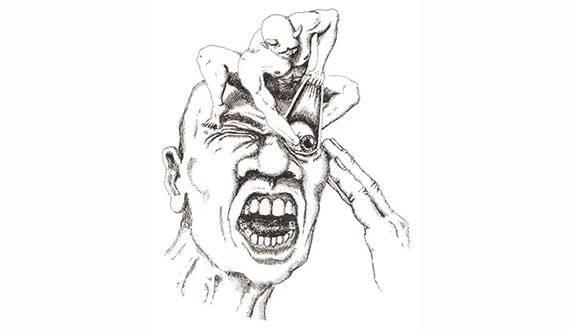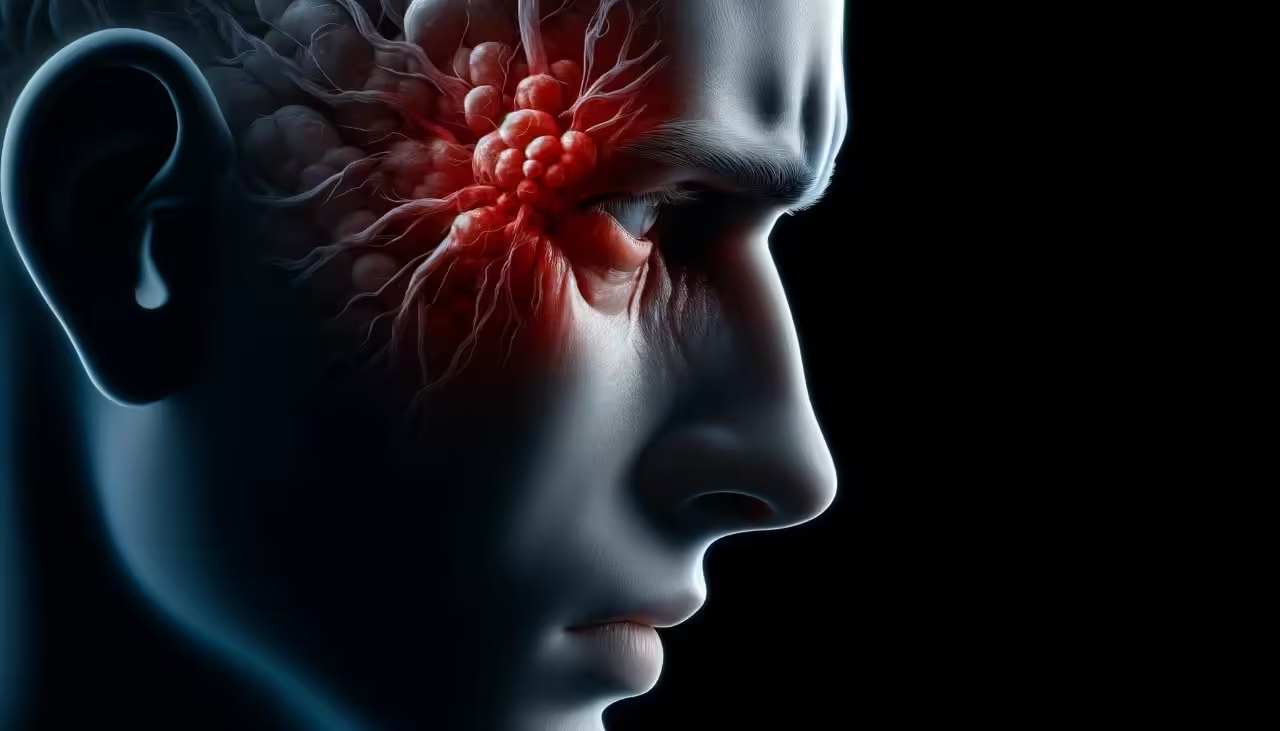Definition of cluster headaches
Đau đầu từng cụm là loại đau đầu nguyên phát có cường độ dữ dội nhất, bệnh diễn tiến từng đợt theo chu kỳ vài năm, bệnh thường gặp trên bệnh nhân nam hơn nữ.
Causes of cluster headaches
Similar to migraines, the cause of cluster headaches remains unclear. Dilation of the arteries in the eye socket is observed, and this dilation may, like in migraines, originate from the thalamus.
Risk factors of cluster headache:
- Gender: more common in men than women.
- Age: 20-40 years old is the typical age of the disease.
- Family factors: almost no family factors.
- Traumatic brain injury: 13% of patients have a history of traumatic brain injury.
Triggering factors: alcohol consumption, being in high-altitude areas, intense physical activity, foods containing nitrates, and the use of vasodilator drugs.
Symptoms of cluster headaches
The pain of cluster headaches is highly intense and may be the most severe pain a person can experience. Typically, it occurs at a specific time, often waking the patient from sleep after a few hours.
Usually, the discomfort is concentrated around the eye socket or on one side of the forehead near the temple. Accompanying symptoms might include pupil constriction, conjunctival congestion, nasal congestion on one side, and sweating on one side of the face.

Furthermore, the pain can radiate to the shoulder and neck on one side. Patients may experience sensitivity to light and noise but do not usually vomit. They often remain alert but are highly agitated due to the pain, with some people feeling so distressed that they may want to bang their heads against a wall.
Chẩn đoán
Diagnosing cluster headaches requires following the diagnostic criteria established by the World Headache Society.
The patient has at least 5 headaches with all 3 of the following characteristics:
- Severe pain on one side of the eye socket, above the eye socket, or in the temporal region lasting from 15-180 minutes if not treated.
- Headache with at least 1 of the following symptoms on the same side:
- Conjunctival congestion
- Watery eyes
- Nasal congestion
- Runny nose
- Facial sweating
- Miosis
- Narrowing of the palpebral fissure
- Eyelid edema
- Number of attacks: 1 attack in 2 days to 8 per day.
Chẩn đoán phân biệt:
Severe headaches need to be distinguished from other types of headaches to have the most appropriate treatment:
- Secondary headaches due to stroke, meningitis, trauma, psychological.
- Migraine
- Tension-type headaches

Điều trị
Although not a life-threatening disease, the pain caused by cluster headaches is very severe. Patients often cannot continue to work, usually because of the pain. Therefore, it is necessary to have a reasonable strategy to stop attacks and prevent recurrence.
Treatment to stop attacks:
Firstly, triptans such as sumatriptan and zolmitriptan can be effective. Additionally, oxygen therapy is another option to consider.Moreover, acupuncture and acupressure may help relieve the pain effectively.
For treatment to prevent the recurrence of attacks:
Oral corticosteroids, including prednisolone and methylprednisolone, are commonly used. In addition, corticosteroid injections into the occipital nerve can be beneficial. Furthermore, blockage of the pterygopalatine ganglion is another preventive measure. Finally, avoiding known triggers is crucial in managing the condition.
Phòng ngừa
Prevention of cluster headaches remains a medical challenge. Avoiding risk factors as well as triggers is essential for patients.
In addition, lifestyle and activity changes also help prolong the recurrence of attacks:
- Avoid foods such as coffee, tea, alcohol, and beer.
- Quit smoking.
- Limit the use of canned foods, fermented foods, and pickles.
- Practice meditation and relaxation.

